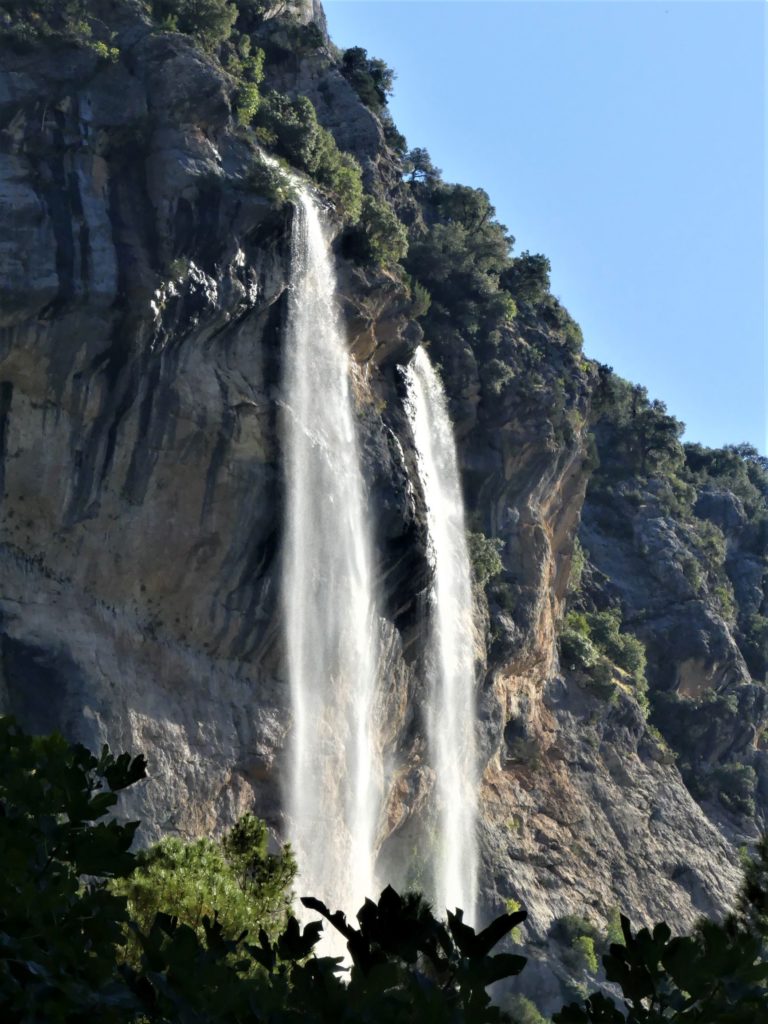Hidden away in the north of Andalucía near Jaen, is the beautiful Parque Natural de Cazorla. This is Spain’s largest protected area, covering 2143 square kilometres of rugged forests, folded mountain chains and deep forest cloaked valleys. It’s not that well-known, even in Andalucía, but for me is one of the highlights of the province, and indeed of Spain as a whole. In my experience it’s one of the best places in the south of Spain to see large mammals – deer, wild boar and Ibex especially are remarkably confident in the open. There are spectacular trails throughout the park and when much of the rest of Andalucía is baked by the summer heat, Cazorla’s forests retain their lush green foliage – a refreshing change when the rest of Andalucía has taken on bleached shades of yellow and brown. Right in the centre of this vast area is the gorge of the Río Borosa. The walk up this river valley, a 24 km full day trip, is perhaps the most popular in the protected area, with large numbers of people on the trail during weekends and holidays, but on no account should this route be missed. It’s an adventure that starts as a pretty and relaxing trail and ends in a landscape that I can only describe as mind-blowingly majestic.
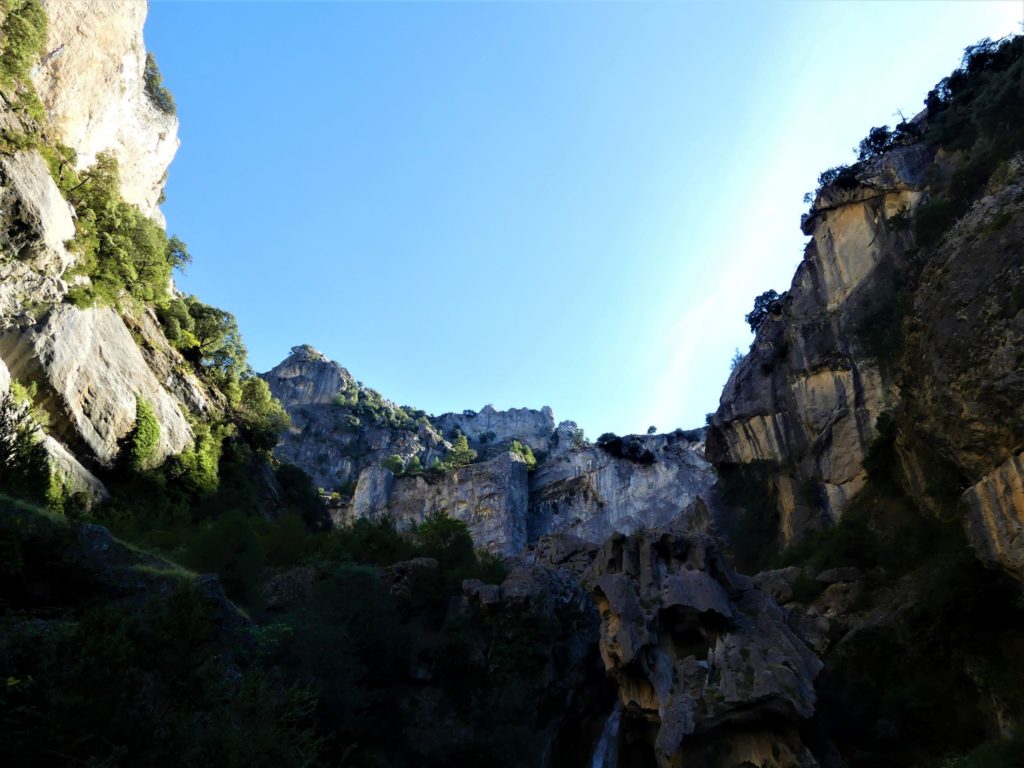
The trail begins at the well-signed Centro de Visitantes Torre del Vinagre, following a wide and easy trail along the north bank of the Rio Borosa. The river is a tributary of the Guadalquivir River, the same river that flows lazily through Sevilla, providing life to Andalucían Capital and the magnificent wetlands of the Doñana National Park. Walking beside the fast flowing stream, cut by small rapids, deep pools and waterfalls, is a delight. The water in the light, in the Spanish sun varies from luminous blues to deep greens, the soft hum of dragonflies piercing the air, butterflies flitting around on the bushes bordering the river. The mountains around are gentle and covered with dense forests.
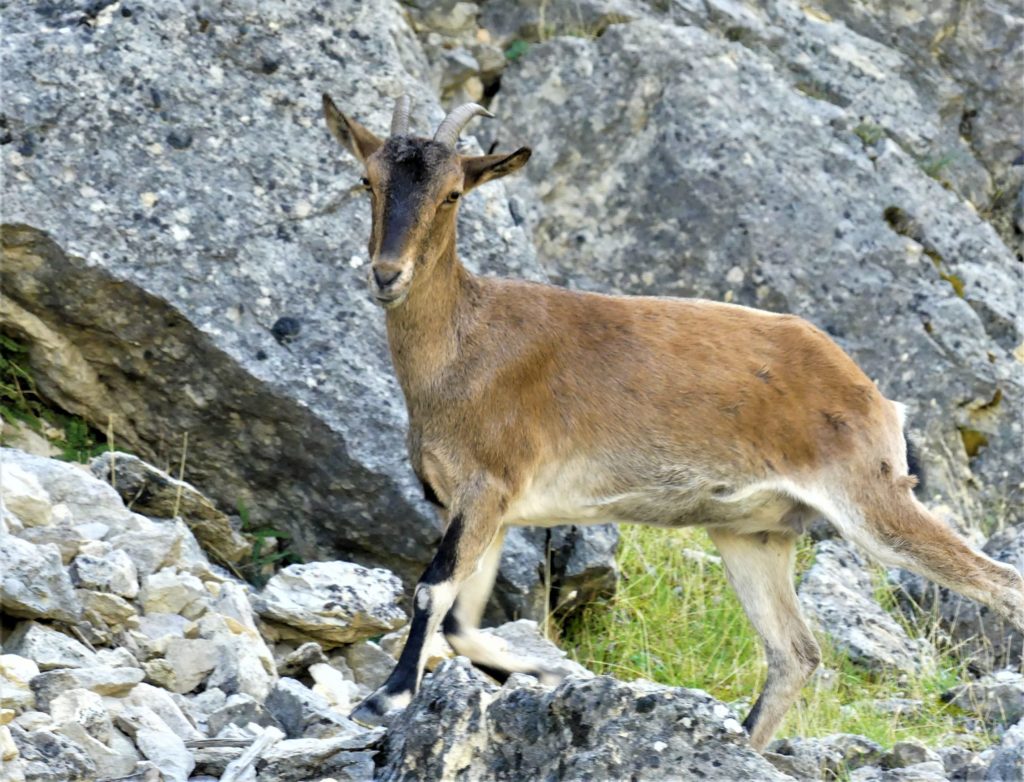
As you continue south east the trail crosses the river to the south bank and you enter a deep sheer canyon, only passable without getting your feet wet due to a constructed walkway put in place by the Park authorities. It’s a lovely walk above the constricted and powerful watercourse. Exiting the light excluding walls of the Canyon and the walkway, you once again enter the wide valley floor, but now above you are giant cliffs and rugged mountains surrounding the lush valley. You cross again to the North Side of the Borosa and quickly begin to gain height as you pass a small hydroelectric power station. You quickly find yourself hiking around the base of vast cliffs that rise above you, passing a high waterfall that drops down the airy heights 50 m or so above you. Below, in the steep river gorge to your right more waterfalls empty into beautiful azure pools, scenes more like those from fairy tale fantasy than something you’d expect to see in real life. You’re walking into a steep valley now walled in by vast walls of rock and rugged peaks on three sides. Inaccessible cliffs and powerful thermals provide perfect conditions for the large numbers of griffon vultures that soar on their almost 3 m wings around the highest peaks. The valley and the route seem to coming to an impasse here, with no visible way out of the valley without some fairly high-level rock-climbing skills, but a little human crafted ingenuity is on hand to provide a wonderful extension to the walk.
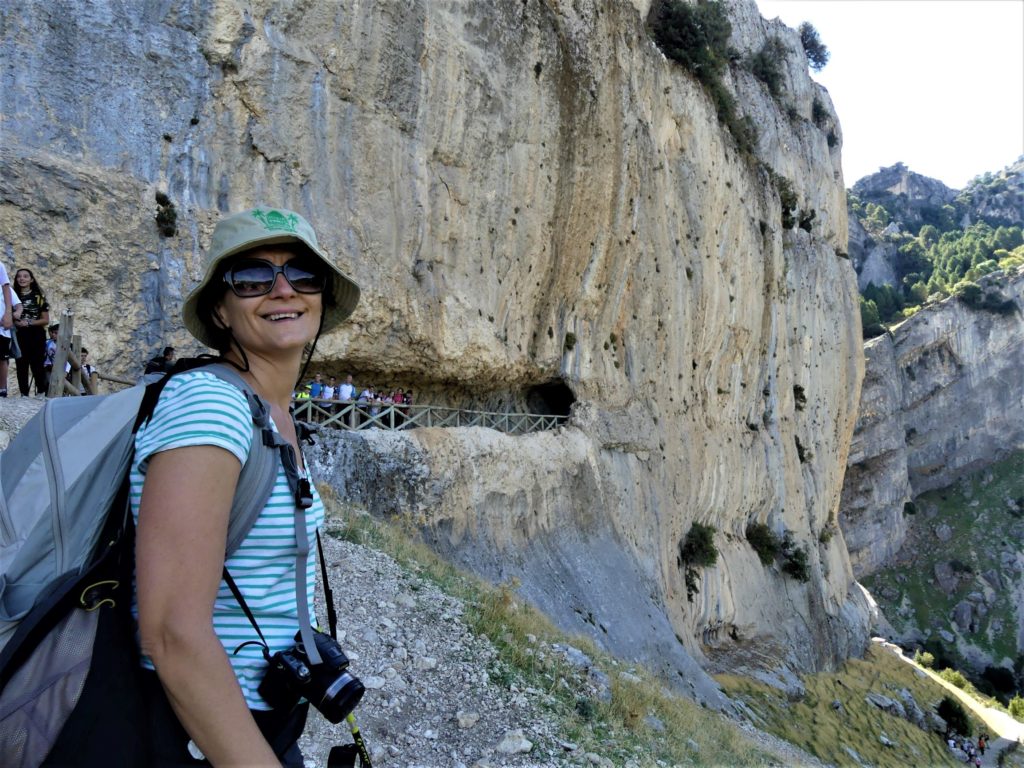
The path, and the main river valley angle round to the left, revealing more waterfalls. A huge cliff towers above to the East and the trail begins to rise in switchbacks towards its near vertical base, away from the river. Here two long tunnels have been hollowed out into the cliff face to accommodate a water channel for the hydroelectric station below. A cramped path follows the water channel into the dark and it’s time to feel like a dwarf entering the mines of Moria! A torch is recommended here to avoid any banged heads.
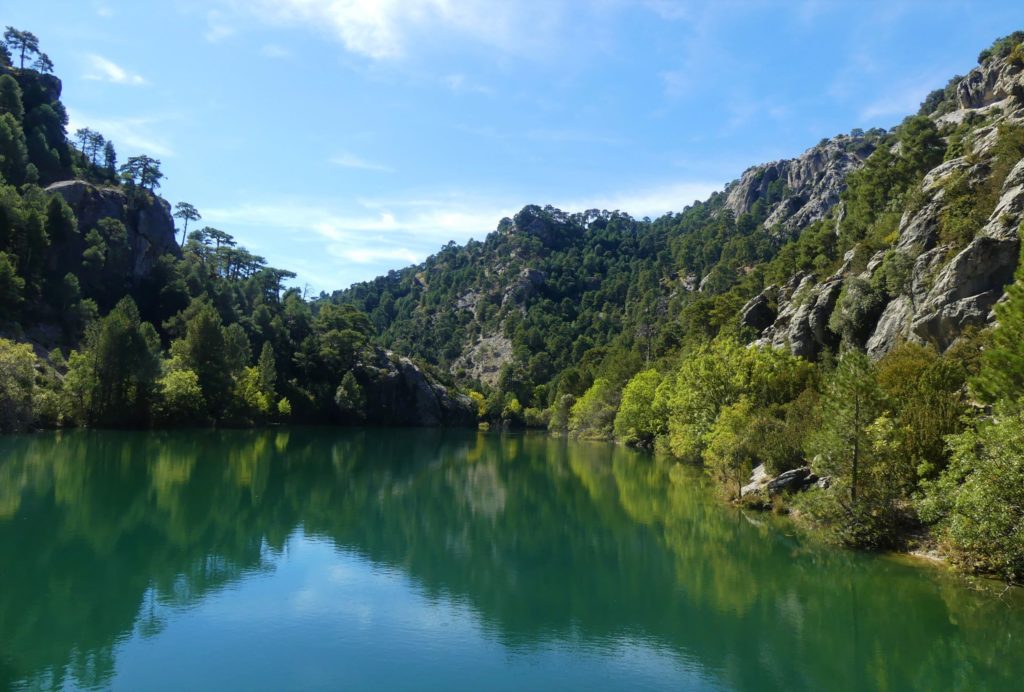
Emerging from the tunnels the deep river valley is now left behind you and you come to two beautiful lakes surrounded by rolling forested hills. The first is a reservoir, filled with trout arcing through its depths. Head across the dam and further up into the hills through thick forest and you come to a second lake, entirely natural, the Laguna de Valdeazores. This is sublime Alpine paradise and a wonderful spot for a picnic – the end of the walk at the headwaters of the Rio Borosa. Nature lovers should keep an eye out for snakes swimming across the lake, water birds and other wildlife wonders. It’s time to retrace your steps, back through the tunnels and through the magnificent valley of the waterfalls, now illuminated in the lovely late afternoon light.
